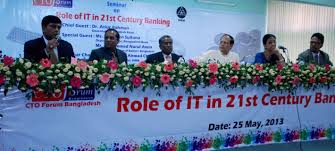Introduction:
A non-bank financial institution (NBFI) is a financial institution that does not have a full banking license or is not supervised by a national or international banking regulatory agency. NBFIs facilitate bank-related financial services, such as investment, risk pooling, contractual savings, and market brokering. Examples of these include insurance firms, pawn shops, cashier’s check issuers, check cashing locations, currency exchanges, and micro loan organizations. Alan Greenspan has identified the role of NBFIs in strengthening an economy, as they provide “multiple alternatives to transform an economy’s savings into capital investment act as backup facilities should the primary form of intermediation fail.
The purpose of this paper is to performance analysis of non banking financial institutions in the context of Delta Brac Housing Finance Corporation Limited, Prime Finance and Investment Limited, Premier Finance and Investment Limited and Phoenix Finance and Investment Limited in Bangladesh. These are the well known brand name in non banking financial institutions industry of Bangladesh. Sufficient literature review and discussions suggest that These Companies are the well being survive as non banking institution to accomplishment by providing financial support to another or similar sector in Bangladesh. Data was collected from two sources. One is primary data and another one is secondary data.
The study showed that the performance of these four companies in case of Bangladesh.
Introductory
Performance of non bank financial institute
The major business of most NBFIs in Bangladesh is leasing, though some are also diversifying into other lines of business like term lending, housing finance, merchant banking, equity financing, venture capital financing etc. Lease financing, term lending and housing finance constituted 94percent of the total financing activities of all NBFIs up to June 2006. A break-up of their financing activities reveals that the share of leasing and housing finance in the total investment portfolio of NBFIs has gradually decreased from 59 and 15 percent, respectively, in 2002 to 46 and 14 percent in June 2006. The share of term loans, on the other hand, has increased from 20 percent to 34 percent during the same period implying increased focus on the former. The evolvement of NBFI business
activity is observed in . It can also be seen from the figure that the portfolio mix of NBFIs has.
NBFIs offer services to various sectors such as textile, chemicals, services, pharmaceuticals, transport, food and beverage, leather products, construction and engineering etc. The percentage of the sector wise distribution of NBFIs investment in 2005 is given in Figure 2. Although an individual NBFI may have a different portfolio as per its business strategy, the aggregated data shows that NBFIs mainly focus on real estate & housing (13%), power & energy (12%), textile (11%) and transport sector (9%).Service (finance and business) is another area of importance for NBFIs. From the perspective of broad economic sectors, investment in the industrial sector (42%) dominated that in the service sector (33%) in 2005. NBFIs are also exploring other sectors namely ‘pharmaceuticals & chemicals’,’ iron, steel & engineering’, ‘garments & accessories’, ‘food & beverage’ and ‘agro industries &equipment’. The weight of these sectors is 23 percent of the total portfolio.
Difference Bank & Non Bank financial Institute Difference
In Bangladesh now different commercial banks and the non banking financial organizations are operating their business. And every organization now involved attracting the retail customers that means the middle income group people of the country. To draw their attention the sells persons of different organization try to knock every possible door. These activities of different organization increase the interest about this sector. As both commercial banks and the non financial institutes are in the market, so it makes confusion to the general people about the activities of these organizations. This article helps the customers to makes differentiate between these.
Non-bank financial institutions represent one of the most important parts of a financial system. In Bangladesh, NBFIs are new in the financial system as compared to banking financial institutions (BFIs). A total of 25 NBFIs are now working in the country. The NBFIs sector in Bangladesh consisting primarily of the development financial institutions, leasing enterprises, investment companies, merchant bankers etc. The financing modes of the NBFIs are long term in nature. Traditionally, our banking financial institutions are involved in term lending activities, which are mostly unfamiliar products for them. Inefficiency of BFIs in long-term loan management has already leaded an enormous volume of outstanding loan in our country. At this backdrop, in order to ensure flow of term loans and to meet the credit gap, NBFIs have immense importance in the economy. In addition, non-bank financial sector is important to increase the mobilization of term savings and for the sake of providing support services to the capital market.
The basic difference may include:-
· A Bank is an organization that accepts customer cash deposits and then provides financial services like bank accounts, loans, share trading account, mutual funds, etc.
· A NBFC (Non Banking Financial Company) is an organization that does not accept customer cash deposits but provides all financial services except bank accounts.
· A bank interacts directly with customers while an NBFI interacts with banks and governments
· A bank indulges in a number of activities relating to finance with a range of customers, while an NBFI is mainly concerned with the term loan needs of large enterprises
· A bank deals with both internal and international customers while an NBFI is mainly concerned with the finances of foreign companies
· A bank’s man interest is to help in business transactions and savings/investment activities while an NBFI’s main interest is in the stabilization of the currency
Besides the differences between the both commercial banks and the non banking financial institutions they play both for the development of the economic structure of the country. If the both play positively than it can be said that, the development of the country is sure.
Product & services
Product & services of Non Bank Financial Institute
Lease Financing
Finance/ Capital Lease
Provide a long-term solution that allows customers to free up working capital
Operational Lease
An operational lease entails the client renting an asset over a time period that is substantially less than the asset’s economic life. It offers short-term flexibility, which may allow the customer to take advantage of off-balance sheet accounting treatment
Hire Purchase
A hire purchase is an alternative to a lending transaction for the equipment purchase. It is usually employed for retail or individual financing of smaller items, such as consumer products. However, hire purchase option is also suitable for business houses depending on tax practices.
Leveraged Leases
Leases generally for large transactions involving three parties: a lessee, a lesser and a funding source. These leases infuse third-party non-recourse debt underwritten by the customer’s ability to raise capital in the public and private capital markets for a significant portion of the cost.
Synthetic Leases
Synthetic lease structure is generally provided for property that retains value over an extended period of time such as aircraft, railroad rolling stock, manufacturing equipment and certain types of real-estate
Home Loan and Real Estate Financing
House loan and real estate financing is extended for purchase of apartment and house, construction of residential house, purchase of chamber and office space for professionals, purchase of office space and display center, purchase and construction of commercial building, real estate developer for construction of apartment project. Mostly mid to long-term in nature
Short Term Loans
Factoring of Accounts Receivables Financing against invoices raised by the supplier after making the delivery successfully. Major Features are Revolving Short Term Facility, Permanent Assignment of Payment, Financing against invoices, Post-delivery Financing
Corporate Finance
Ø Bridge Finance is a kind of Short Term Finance extended in anticipation of immediate long term financing such as public issue, private placement, loan syndication, lease syndication, loan, lease & debentured Finance
Ø Syndication of Large Loans Making available a large financing for a corporate client. Arrange syndicated financing in the mode of loan, lease, equity, working capital, or any combination thereof. Particularly useful for large projects requiring large scale investment and no single financier wants to take the whole risk. Example: Greenfield project.
Ø Merger and Acquisition help find appropriate organization for best possible synergy, conduct valuation of companies and select suitable merger and acquisition methods, negotiate and execute deal beneficial for all the parties involved
Merchant Banking
Ø The Issue Management group is capable of devising innovative solution for raising capital – debt e.g. placement of bonds and debentures, and raising equity through private and public placement – from the market suiting the unique needs and constraints of the corporate clients.
Ø Underwriting refers to the guarantee by the underwriters that in the event of under-subscription, the underwriter will take up the under-subscribed amount on pro-rata basis upon payment of price of that option
Ø Portfolio Management Merchant banks allow small investors to open investor account with merchant banks and provide support for the purchase and sales of shares . Clients shall have absolute discretionary power to make investment decisions.
Securities Services
Ø Brokerage Services Provide services for Trade Execution (Dhaka and Chittagong Stock Exchanges), Pre -IPO private placement, Asset allocation advice, Opportunities for trading in different financial instruments
Ø CDBL Services as full service Depository Participant (DP)
Apart from the brokerage services, securities services also provide the services like BO (Beneficial Owner)accounts opening and maintenance, Dematerialization ,Re-materialization, Transfers and multiple accounts movement, Lending and borrowing etc.
Challenging Issues for NBFIs
Sources of Funds
NBFIs collect funds from a wide range of sources including financial instruments, loans from banks, financial institutions, insurance companies and international agencies as well as deposits from institutions and the public. Line of credit from banks constitutes the major portion of total funds for NBFIs. Deposit from public is another important source of fund for NBFIs, which has been increasing over the years. NBFIs are allowed to take deposits directly from the public as well as institutions. According to the central bank regulation, NBFIs has the restriction to collect public deposits for less than one year, which creates uneven competition with banks as banks are also exploring the business opportunities created by NBFIs with their lower cost of fund. Although recent reduction of the minimum tenure of the term deposit from one year to six months for institutional investor has had a positive impact on their deposit mobilization capacity. NBFIs can develop attractive term deposit products of different maturities to have access to public deposits as these are one significant source of their funds.
Asset-Liability Mismatch
Asset-liability mismatch is another cause of concern for NBFIs. Demand for funds to meet the increasing lending requirements has increased many times. But the availability of funds has become inadequate as NBFIs are mostly dependent on loan from commercial banks. International Finance Corporation (1996) observed that leasing companies are in a great dilemma while managing the mismatch between their asset and liability. According to IFC, the average weighted life of the company’s business portfolio should be less than the average weighted life of its deposits and borrowing in its operating guidelines for a leasing company. Only one company in Bangladesh was successful in maintaining the above guideline . Therefore, NBFIs have to explore alternative ways for raising funds. Information about the asset-liability mismatch scenario
Investment in High Risk Portfolio
It is already mentioned that cost of funds for NBFIs are higher than that of banks. In order to sustain the high cost of borrowing, NBFIs may be inclined to invest in the high return segments, which can exposé them to commensurately higher risks. Moreover, fierce competition among competitors may also force many NBFIs to reduce the margin at the expense of quality of the asset portfolio. This strategy may eventually create the possibility of an increase in the non-performing accounts. Unless adequate risk management capabilities are developed, the growth prospects of NBFIs would not only
be hindered but it might also be misapprehended .
Product Diversification
NBFIs emerged primarily to fill in the gaps in the supply of financial services which were not generally provided by the banking sector, and also to complement the banking sector in meeting the financing requirements of the evolving economy. With regard to deployment of funds, the total outstanding lease, loan and investment by NBFIs stood over BDT 34 billion, BDT 26 billion and BDT 3billion respectively by the end of September, 2006. NBFIs are permitted to undertake a wide array of activities and should therefore not confine themselves to a limited number of products only. Leasing, no doubt, presents good alternative form of term financing. Even in leasing, investments were not always made in the real sector and non-conventional manufacturing sector. Almost all the leasing companies concentrated on equipment leases to BMRE (Balancing, Modernization, Replacement and Expansion) units only. New industrial units were hardly brought under the purview of leasing facilities. This implies that the new customer base has not been created and the growth of industrial entrepreneurship could not be facilitated through NBFI financing packages. Diversifying the product range is a strategic challenge for NBFI in order to become competitive in the rapidly growing market.
Competition with Banks
With the advent of new NBFIs, the market share is being spread over the competing firms and the demand facing each firm is becoming more elastic. Active participation of commercial banks in then on-bank financing activities has further increased the level of competition in the industry. Leasing was considered as a non-bank financing activity until recently. But a large number of banks has also shown their interest in the leasing business and has already penetrated the market.
















